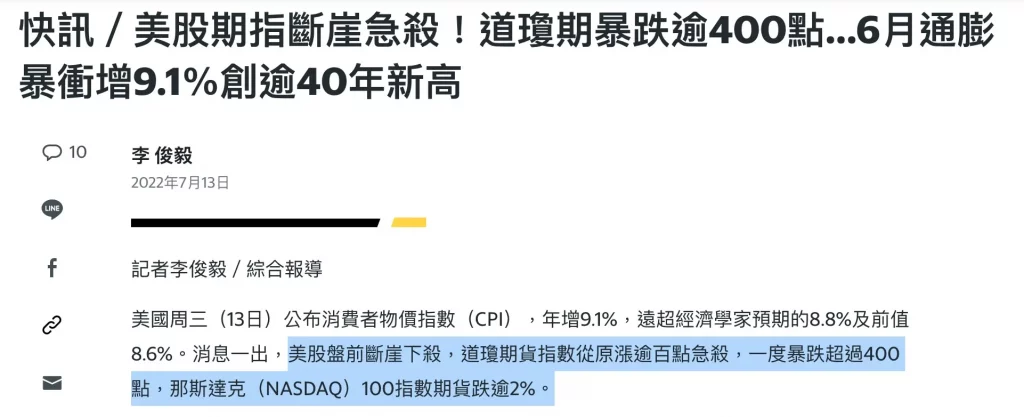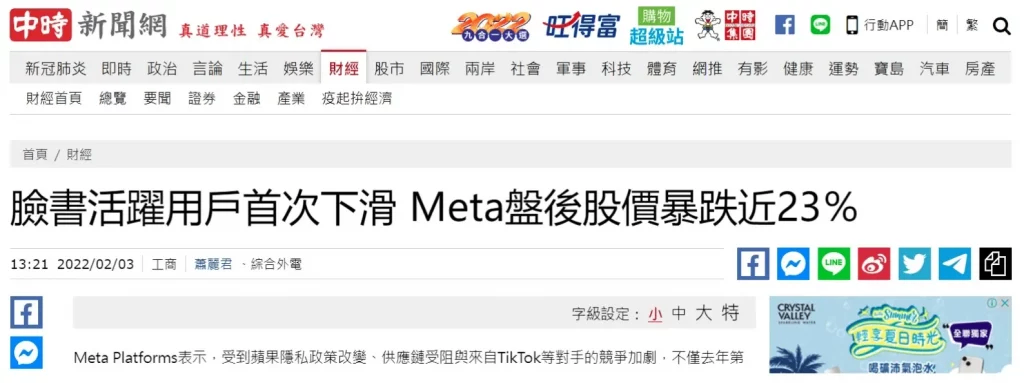Introduction to Investment|What is pre-post trading in U.S. stocks??
What happens in the pre-market and post-market sessions that affect the stock market?Why trade in pre-market and after-market sessions?

When investors want to trade U.S. stocks, they usually trade at 09: 30-16: 00 EDT, or plug in limit orders during this period, and automatically set up orders after the U.S. market opens.。
As the pre / after-hours trading mechanism for U.S. stocks has become more popular, many U.S. stock brokerages have also opened pre / after-hours trading sessions for U.S. stocks to give investors more flexibility in trading。
But have you ever wondered why you want to trade in the pre-post hours??Trading in regular hours is fine, isn't it??
This article will share with you the events in the market that can affect the stock market and why investors should trade U.S. stocks in the pre-market and post-market sessions。
What is pre-post trading in U.S. stocks??
The regular trading hours of U.S. stocks are 09: 30-16: 00 (U.S. Eastern Time), while the pre-market and after-market trading of U.S. stocks refers to a trading mechanism outside the general regular trading hours, which can provide investors with more trading opportunities, that is to say, this kind of trading belongs to the extended trading period, which can also be called "unconventional trading hours."。
The purpose of setting up the pre-market and after-market trading mechanism is mainly to avoid the market disclosing material news outside the normal trading hours, so that these news can be digested in the pre-market and after-market trading hours, so that investors can make corresponding decisions in advance and reduce trading risks.。
- Pre-Market Trading Session: 04: 00-09: 30 (EDT)
- After-hours trading session: 16: 00-20: 00 (EST)
Pre-market, after-market trading is generally through the electronic communications network (Electronic Communications Network, referred to as ECN) trading, that is, completely through the electronic way to automatically play, and the entrustment method can only use the "limit order" way to entrust.。
Both large institutional investors and general investors can trade in U.S. stocks before and after hours, but not all brokerages have this service, and not all stocks can be traded before and after hours, and only stocks listed on the exchange can be traded in this way.。
What happens in the pre-market and post-market sessions that affect the stock market?
-
economic indicator information
Many important U.S. economic indicator data reports are released before normal trading hours, and the results of these data usually affect the decisions of most investors and are therefore prone to market volatility.。
For example, gross domestic product (GDP) data, non-farm payrolls (Nonfarm payrolls) data, unemployment rate (Unemployment Rate), etc., are usually released at 08: 30 a.m. EDT, which is 1 hour before the regular trading session.。
For example, on July 13, 2022, the United States announced an annual increase of 9 per cent in the consumer price index (CPI)..1%, higher than market expectations of 8.8% and previous value 8.6% and a 40-year high。As soon as the news came out, U.S. stocks began to kill before the market, and the Dow Jones futures index plunged more than 400 points.。

-
Enterprise financial report announcement
January, April, July, and October of each year are the times when most U.S. companies report their earnings, and corporate earnings reports are usually made before or after normal trading hours, meaning that pre-market and post-market trading is of significant importance for market volatility during the earnings season。
As with economic indicators, it is easy to make the market more volatile after the release of financial reports, which usually occurs when the results of the financial reports released by the company are better than or do not meet market expectations.。
For investors and traders, the ability to react to these developments outside of regular trading hours is invaluable, and most people are able to make corresponding decisions based on the results of financial reports in the first place.。
For example, if an investor with a long position receives a less than ideal message in the after-hours market, he can quickly close his position at a loss instead of continuing to hold the holding overnight and waiting for the riskier next day to move.。
For example, in early February 2022, Facebook's parent company Meta (FB-US) due to the announcement of the fourth quarter of 2021 earnings and revenue outlook is not good, due to Apple's privacy policy changes, the first decline in global active users, increased competition, and the company's forecast future results will be less than expected... and other factors, resulting in after-hours trading prices plunged nearly 23%。

-
Major Incidents
For example, major emergencies such as wars, natural disasters, international political turmoil or terrorist attacks... may cause huge shocks in the trading market in the first place, and if they occur outside of normal trading hours, pre-market and after-market trading can provide investors with the first time to take countermeasures to avoid risks.。
For example, in December 2021, the new coronavirus variant strain Omicron began to appear in the United States, and on the 20th concerns about the Omicron virus spread in the market, causing the Dow Jones futures index to plunge more than 600 points before the market.。
Why trade in pre-market and after-market sessions?
In general, a smaller number of participants in pre-market and after-market trading means lower liquidity and volatility, which can lead to greater bid-ask spreads and volatility, as well as increased trading risk.。
However, the pre-market and after-market trading mechanism still has its benefits, such as the following two points.
-
Avoid jet lag
For investors in Asia, the pre-market and after-market trading mechanism avoids having to trade stocks in the middle of the night, increasing trading opportunities, while facing information from the market without having to wait until the middle of the night (regular trading hours for U.S. stocks) to process it.。
-
The first time to react
Financial markets are changing rapidly, and the market atmosphere may be depressed a few minutes before, and then trading may become active due to a news release, such as: corporate earnings announcements that exceed expectations, international political factors, or monetary policy results...。
Therefore, pre-market and after-market trading can make trading more flexible, and also allow investors to react to market news in the first place, making timely stop-loss or add-on actions.
SUMMARY
Pre-market and after-market trading of U.S. stocks is necessary to provide investors with market information received during irregular trading hours to make first-time response decisions and reduce risk.。
However, in general, there are very few participants in pre-market and post-market trading, so in addition to poor liquidity, price volatility will be greater during this period, which is a risk that investors must be aware of when trading.。
·Original
Disclaimer: The views in this article are from the original Creator and do not represent the views or position of Hawk Insight. The content of the article is for reference, communication and learning only, and does not constitute investment advice. If it involves copyright issues, please contact us for deletion.